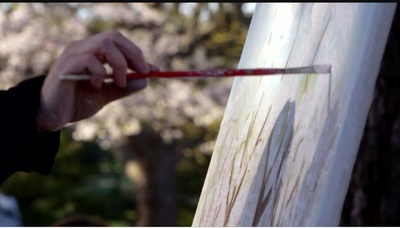Artist also needs Mathematics!

An artist wanted to paint a picture on a canvas which would allow for a margin of 4 inches on top and bottom and two inches on each side . He wanted the picture itself to occupy 72 square inches.
What would be the smallest dimensions, the canvas he is going to obtain should possess?
Note: If the answer is a × b dimensions of the canvas, type your answer as the product a b .
The answer is 200.
This section requires Javascript.
You are seeing this because something didn't load right. We suggest you, (a) try
refreshing the page, (b) enabling javascript if it is disabled on your browser and,
finally, (c)
loading the
non-javascript version of this page
. We're sorry about the hassle.
2 solutions
Let the width of the image be w and therefore the height w 7 2 . Then, the dimensions of the canvas are ( 2 + w + 2 ) × ( 4 + w 7 2 + 4 ) = 8 w + w 2 8 8 + 1 0 4 .
To minimize this, we take the derivative and set it equal to zero.
d w d = 8 − w 2 2 8 8 = s e t 0 ⇔ 8 w 2 = 2 8 8 ⇔ w = ± 6
We can ignore w = − 6 because we're talking about sizes.
Then, we plug in w = 6 into our first equation to get ( 2 + 6 + 2 ) × ( 4 + 6 7 2 + 4 ) = 1 0 × 2 0 = 2 0 0
Perfect solution!
Relevant wiki: Arithmetic Mean - Geometric Mean
Let the dimensions of the picture be x × y . Therefore x y = 7 2 . Then the area of the canvas is:
a b = ( x + 8 ) ( y + 4 ) = x y + 4 x + 8 y + 3 2 = 7 2 + 4 x + 8 y + 3 2 = 4 ( x + 2 y ) + 1 0 4 ≥ 4 ( 2 4 ) + 1 0 4 = 9 6 + 1 0 4 = 2 0 0 For a and x being heights. Note that x y = 7 2 By AM-GM inequality: x + 2 y ≥ 2 2 x y = 2 1 4 4 = 2 4 Equality when: x = 1 2 , y = 6